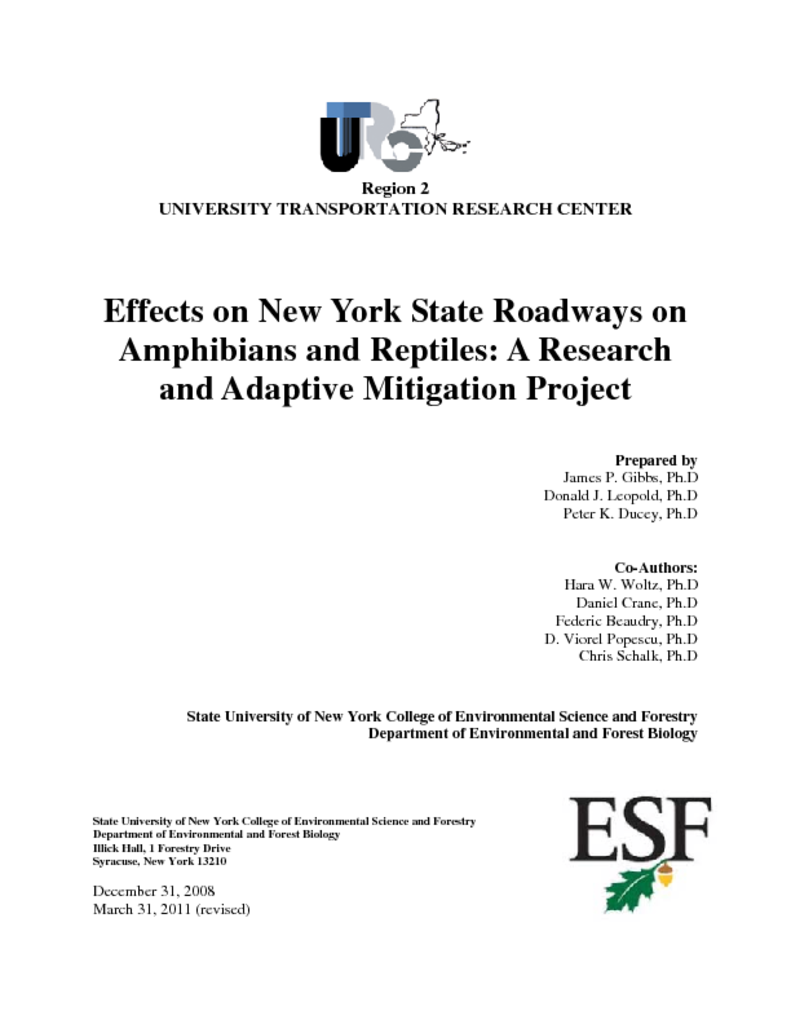<p>This report explains the impacts of transportation infrastructure on herpetile populations, the landscape, local habitat, and architectural attributes of effective herpetile crossing structures and employs habitat analyses to identify 'connectivity zones' where crossing structures would be most appropriately deployed along New York State roadways. To conserve New Yorks herpetiles we must protect a diversity of habitats that they require as well as the connections between them. Roadways are a critical consideration because they frequently divide migration and dispersal routes of herpetiles. Virtually all species of frogs, toads, and salamanders move each year from forests and fields, where they spend much of the year feeding, resting, and hibernating, to wetlands to breed. Snakes also roam widely in search of prey and mates, visiting both wetlands and uplands in their meanderings. This study can provide science-based guidance for mitigating the effects of road-mortality on herpetofauna, both in New York State and elsewhere in the northeastern United States. It is clear from studies that roads have the capacity to influence both local and regional population dynamics of amphibians and reptiles. The degree to which road mortality affects populations seems highly dependent on the life-history characteristics of species and the degree to which natural habitat has been altered (both by roads and in other ways), however. Road mortality is of particular concern to populations of species such as turtles (i.e., species with high adult survival under natural conditions, late sexual maturity, and relatively low fecundity compared to other species of herpetofauna). To address these objectives seven integrated studies were conducted in support of these objectives Studies focusing on the design of crossing structures have tended to be based either on animals translocated to experimental arenas or monitoring the use of existing structures. The behavior of animals in the former approach may not represent that of animals under natural conditions. To test the effects of culvert attributes including length, diameter and substrate on choice, we applied a novel technique whereby experimental arrays were placed in the path of migrating spotted salamanders, allowing choice to occur under natural movement conditions. A higher abundance of spotted salamanders were found where flowing water was present on the upslope of the road. More American toads were found on sections of road without a wetland on the downslope side and where there was a culvert nearby. Spotted salamanders showed no clear preference for culverts with different attributes. Our results show that predicting where amphibians will be concentrated within crossing hotspots is possible, allowing effective placement of mitigation, but that these patterns are likely to differ between species. We found that spotted salamanders undergoing their natural movements appear to be more tolerant of differences between culverts when compared with studies in experimental arenas, and that a variety of different culverts will work as crossing structures</p>




